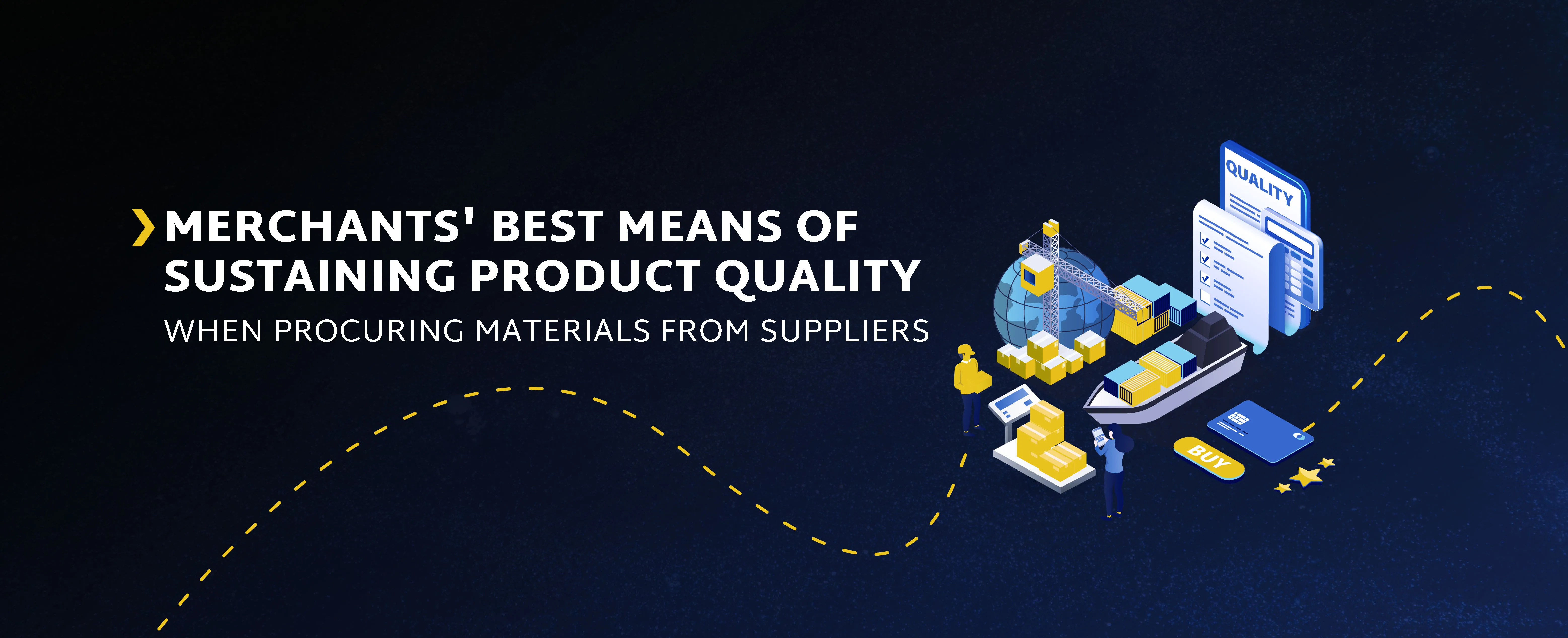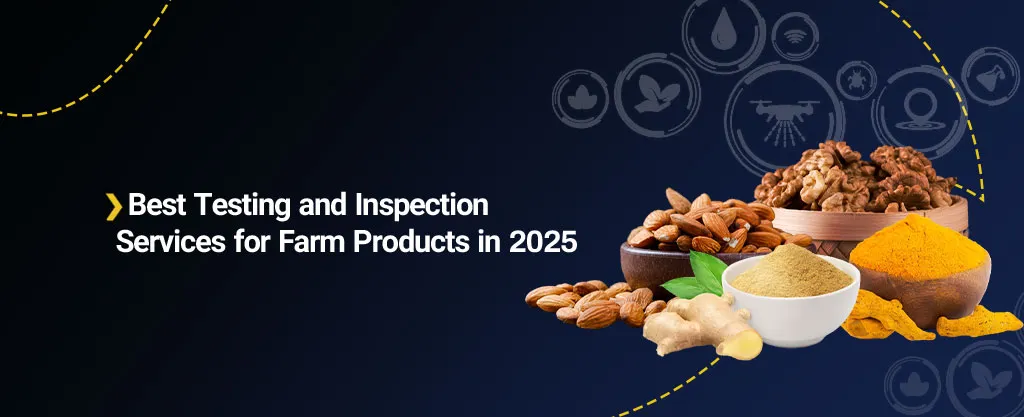Applying efficient plans while purchasing can significantly reduce the risks of poor quality, resulting in satisfied customers and improved operations. This article examines holistic means that sellers can employ to ensure product quality while acquiring products directly from manufacturers or suppliers.
Why Merchants Value Assurance of Product Quality at Source
Making sure products are of quality from the get-go isn't just a safety precaution—it's an important strategy for retailers who want to establish trust, minimize returns, and uphold a positive brand reputation. When companies buy products straight from suppliers or manufacturers, they can check standards, review materials, and outline exact specifications before products hit retail shelves. Here we will explore why source quality control is so important and how traders can utilize intelligent and practical approaches to reduce risk and enhance customer satisfaction.

1. Conduct Thorough Supplier Assessments
Before engaging in business with a supplier, it's important to evaluate their capacity to supply to your level of quality. This ought to include:
- Certifications and Compliance: Check if the supplier has important certifications like ISO standards, which signify that they follow accepted quality management practices.
- Production Capability: Check the supplier's factories, machines, and capacity to manufacture adequate quantities of products to meet the demand without any deterioration in quality.
- Financial Stability: A financially stable supplier will be less likely to cut corners that would affect product quality.
- Reputation and References: Obtain feedback from other customers to assess the consistency of the supplier's quality and reliability.
Site visits can be used to gain firsthand information about the operations and quality control of the supplier.
2. Define Clear Quality Standards and Specifications
Defining specific quality needs is crucial. Give comprehensive product specifications that outline materials, dimensions, performance standards, and tolerance levels that are acceptable. Good documentation promotes a common understanding of the required quality by both parties, diminishing the prospects of misunderstandings.
3. Create Solid Contracts with Quality Clauses
Include some quality-related terms in contracts, e.g.:
- Quality Standards: Specify the levels of quality to be achieved by products.
- Inspection Rights: Reserve the right to conduct inspections at various production stages.
- Remediation Processes: Detailed steps for fixing quality problems, including corrective action and penalty for non-conformance.
Well-written contracts are legal protections and establish clear expectations for quality assurance.

4. Perform Pre-Production Sampling
Ordering sample products before mass production enables quality testing against standards. This isolates and addresses potential problems early on, making it possible to adjust materials or processes of manufacture to guarantee the desired end product.

5. Create a Thorough Quality Control Plan
Develop a plan that describes the quality control measures during the production process, including:
- Incoming Material Inspections: Check the quality of raw materials and components when they arrive.
- In-Process Inspections: Monitor the production processes carefully to identify and correct issues promptly.
- Final Product Testing: Fully test finished products to make sure that they comply with all specifications.
Periodic checks ensure that quality is consistent and faulty goods do not reach the customers.
6. Use Outside Testing and Certifications
Hiring independent testing organizations to confirm product quality provides an additional guarantee. Third-party certification can ensure adherence to industry standards and government regulations, providing greater credibility and consumer confidence.
7. Foster Open Communications with Suppliers
Creating open and frequent channels of communication with suppliers enables the quick resolution of quality-related problems. Strong relationships foster cooperation in solving problems and making improvements.
8. Continuously Monitor Supplier Performance
Establish a system for monitoring supplier performance with key performance indicators (KPIs) like defect rate, on-time delivery, and responsiveness. Ongoing monitoring allows trends and issues to be identified and addressed through proactive quality management.
9. Invest in Supplier Development: Collaborate with suppliers to enhance their quality management capabilities by training, sharing best practices, and providing resources. Investment in supplier development can lead to long-term supply chain efficiency and product quality gains.
10. Diversify the Supplier Base
Depending on one supplier is always a gamble. Having diversified suppliers reduces risks linked to quality problems, supply breakdowns, or capacity limitations. Having alternative sources guarantees continuity and upholds quality levels.
11. Use Technology to Ensure Quality
Utilization of quality management software can automate processes such as inspection tracking, document control, and analysis of data. Technology enhances efficiency and provides real-time quality performance feedback.
12. Carry Out Regular Checks and Reviews
Arrange regular audits of the supplier facilities and quality systems to monitor continued compliance with the agreed standards. Regular audits identify areas for improvement and emphasize the priority of quality in the supplier relationship.
5 Strategies for Ensuring Product Quality from Manufacturers
Having good quality products when buying directly from manufacturers is important for sellers who want to retain customers and protect their brand reputation. Following good strategies can help in achieving consistent product quality. Here are five main ways:
1. Full Supplier Check
Before entering into a partnership, scrutinize potential suppliers thoroughly. This involves looking at how they produce goods, how they manage quality, if they adhere to industry standards, and if they are financially capable. Going to their sites and asking for references from previous customers can give valuable insight into their quality processes and reliability.
2. Clear Communication of Quality Standards
Define and notify your suppliers of specific quality standards. Providing product specifications, tolerable limits, and desired performance criteria in writing ensures that the two are on the same page. Recording these specifications in a contract can be a point of reference and prevent misunderstanding. 3. Carrying Out Rigorous Inspection Processes Use systematic inspection on different levels of manufacturing the product. This entails inspection before manufacturing, during processing, and before shipping. Employing external quality control companies can provide unbiased testing and verify that products meet the agreed-upon standards before shipment.

3. Diversify the Supplier Base
Depending on one supplier is always a gamble. Having diversified suppliers reduces risks linked to quality problems, supply breakdowns, or capacity limitations. Having alternative sources guarantees continuity and upholds quality levels.
4. Use Technology to Ensure Quality
Utilization of quality management software can automate processes such as inspection tracking, document control, and analysis of data. Technology enhances efficiency and provides real-time quality performance feedback.
5. Carry Out Regular Checks and Reviews
Arrange regular audits of the supplier facilities and quality systems to monitor continued compliance with the agreed standards. Regular audits identify areas for improvement and emphasize the priority of quality in the supplier relationship.
Six Key Strategies for Ensuring Product Quality When Purchasing Directly from Manufacturers
Having good quality products when buying directly from manufacturers is important for sellers who want to retain customers and protect their brand reputation. Following good strategies can help in achieving consistent product quality. Here are five main ways:
1. Full Supplier Check
Before entering into a partnership, scrutinize potential suppliers thoroughly. This involves looking at how they produce goods, how they manage quality, if they adhere to industry standards, and if they are financially capable. Going to their sites and asking for references from previous customers can give valuable insight into their quality processes and reliability.
2. Clear Communication of Quality Standards
Define and notify your suppliers of specific quality standards. Providing product specifications, tolerable limits, and desired performance criteria in writing ensures that the two are on the same page. Recording these specifications in a contract can be a point of reference and prevent misunderstanding.
3. Rigorous Inspection Processes
Carrying Out Rigorous Inspection Processes Use systematic inspection on different levels of manufacturing the product. This entails inspection before manufacturing, during processing, and before shipping. Employing external quality control companies can provide unbiased testing and verify that products meet the agreed-upon standards before shipment.
4. Performing Rigorous Inspection Procedures
Carry out regular inspections at different phases of manufacturing products. This includes inspection before production, in the course of production, and before shipping. Outsourcing quality control companies can provide independent evaluation and assurance that products have attained agreed-upon standards before shipping.
5. Establishing Close Ties with Suppliers
Good supplier relationships, built and nurtured through effort, guarantee greater cooperation and coordination. Regular contact, feedback sessions, and joint problem-solving programs can fuel continuous improvement in product quality and faster response service.
6. Ongoing Performance Monitoring
Ongoing Performance Monitoring Track and assess the performance of suppliers against key performance indicators (KPIs) like defect rate, on-time delivery, and how quickly they respond to quality problems. A supplier scorecard system will help with monitoring improvement over time and pinpointing areas that need improvement.
With these strategies in your procurement practices, you can drastically improve the quality of your products and gain a more stable supply chain.
The Reasons Supplier Audits are Crucial for Quality Assurance
Conducting thorough supplier audits guarantees that potential suppliers fulfill your quality requirements and regulatory adherence. Conducting frequent audits can reveal discrepancies and areas for improvement to guarantee a steady alliance.
Utilization of technological innovations, such as quality management systems and real-time monitoring systems, can make the process of quality control easier. These technologies provide data-driven feedback that allows proactive problem-solving and maintenance of product standards.
Ensuring Product Quality Through Effective Sourcing Practices with Momex
To ensure quality items when buying at the source, one ought to use several practices. These include carefully screening the suppliers, defining standards clearly, negotiating strict agreements, and policing the process. Using these precautions, retailers will be able to reduce risks, increase customer satisfaction, and develop strong, dependable supply chains.
One service that can help facilitate this process is Momex, a platform that connects businesses with trusted suppliers and offers tools for quality assurance and monitoring, ensuring that products meet the desired standards before reaching customers. Through Momex, retailers can streamline their sourcing process while maintaining the highest quality control.














